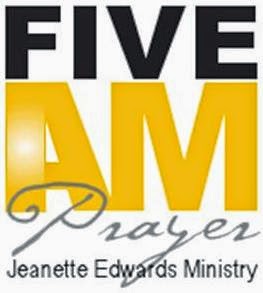Psalm 81, 98; Numbers 10:9; Genesis 22:13; Exodus 19:16; Leviticus 23:24, 25:9; Ezekiel 33:3; Joshua 6:4-20; Amos 2:2; Zephaniah 1:6; 1 Samuel 4:5; 2 Samuel 6:15; 2 Chronicles 15:14; Psalm 89:15, 150:5; Ephesians 5:13-14; Zechariah 9:14; 1 Thessalonians 4:16-18; Revelation 8:6-13; Genesis 2:8; 1 Chronicles 14:15; Revelation 1:15, 8:6; Numbers 10:8; Joshua 6; Psalm 98; Exodus 19; Leviticus 23:23
https://www.blogger.com/blogger.g?blogID=4106677230214927070#editor/target=post;postID=4127176123250555661
We are walking in today: The Shofar Of Yahweh
Witness hear My voice throughout the Bible: H8085 shama` listen, hear, obey, listen or give heed to, grant a request & H6963 qowl sound of instrument, sound of voice or proclamation
Genesis 3:10; Deuteronomy 18:16; Isaiah 28:23; Daniel 10:9; John 5:36-38, 10:16; Revelations 3:20
The shofar is the horn that was used to alert the children of Israel and in the worship of Yahweh. We have throughout scripture, the shofar in major Bible scenes, the ram caught by the horns in the thicket on the mountain with Abraham and Isaac; the blast that was sounded when the mountain was covered with clouds and thunder before Moses goes up to receive the Torah; with Joshua and the people circling Jericho and the walls coming down. We have to see that what Yahweh does is with sound. He spoke, He said and sounded in order to create and protect His people Israel. The sounds that He releases are with power and distinction, the one used most often in the earth is the shofar. This is the only instrument that is used by both heaven and earth. For in some cases the messengers will sound the shofar as well. When going out to war, the shofar was sounded--Gideon and troop sounded the shofar that released the sword of the Lord against the enemy. This sounding of the shofar was used to gather the people together; to distribute messages; to crown the new king. The most notable use of the shofar is for the priests to go before the warriors in battle with the sounding of the shofar. This has to be noted, to as we are not fighting battle in the natural but in the spirit! This we must understand, that this sound going forth pierces through the enemy and establishes Yahweh's intention. In the worship in the temple, the shofar was used in praise. We are told, Psalm 98:6 (CJB) With trumpets and the sound of the shofar, shout for joy before the king, Adonai! This is for a celebration of the greatness of our King of kings! The shofar blast is also associated with those who are being woken up to return to the truth. This return from worldly ways to the original directions of Yahweh is seen in the blast of the shofar in Daniel 12:2 (CJB) Many of those sleeping in the dust of the
earth will awaken, some to everlasting life and some to everlasting
shame and abhorrence. The root or the word shofar means to beautify which can be seen as beautification of our ways when we return to Elohim and His ways!
As we have come to remember and return to the feast days and appointed times of Yahweh we find that the sounding of the shofar was also instructed. On the new moon, which begins the Hebrew months and certainly on the feast of Trumpets when shofar and trumpets are blown, for this set apart time. As we continue to read our Bibles we find in the last half the shofar blast of Yahweh during a series of judgements. Found in scripture in throughout the book of Revelation.
There are several sounds that the shofar makes:
-Tekiah is one long unbroken sound that extends for several beats of musical measure. This announces Yahweh's intent and establishes righteous boundaries in an area and the place He is to occupy.
-Shevarim contains several short or breaking sounds. Which announces His intent to breakthrough barriers and shatter resistance to His will.
-Tekiah Gdolah the Great Tekiah is a single sound unbroken and long, played for several musical measures. Due to the commanding tone is used to announce or begin a series of shofar sounds or the conclusion of a series of sounds. This declares the extension of Yahweh's glory and domain.
Simply the shofar is a horn made of undomesticated animal that is prepared and blown to release a specific sound. The animals most often used are the ram. Ram shofars can be up to 30 inches in length and are often with a single curve in them. The Kudu shofar or Yememite shofar is the longer twisted or curved horn. Due to it's size various octaves can be reached when sounding. The Gemsbok shofar is a straight horn with ridges and does not have any curves in it. Made from the Gemsbok antelope.
Take some time to look these scriptures for yourself. Make a note that the word translated as trumpet is often times a shofar. Just as the soldiers are directed by the horn blast we too must heed the shofar of Yahweh in directing us to where His intentions and dominion resides!
To hear this awesome teaching again click here. https://www.freeconferencecallhd.com/playback.html?n=RvxYy/jsZHx

No comments:
Post a Comment